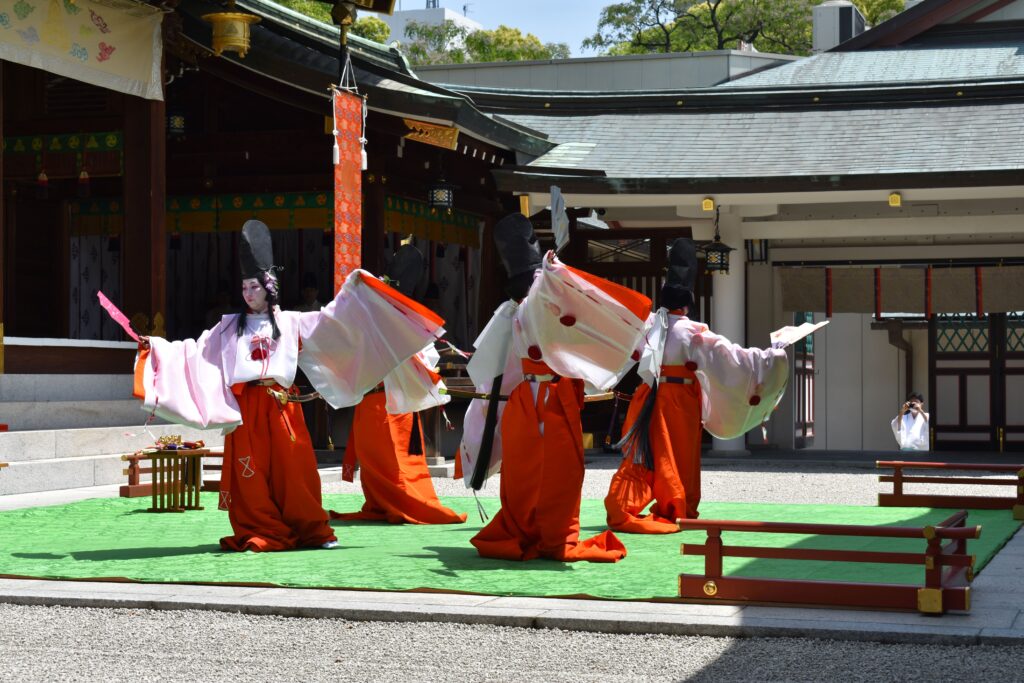The imaginary bird “Karyohaku,” which is said to live in paradise, is one of the eight rin-eup raku, which are said to have been introduced to Tennoji Temple by the monk Butsutetsu.
It is a bugaku that symbolizes the historical background of the story when Buddhism was flourishing.
The dancer wears a one-width robe with a bird design and a “ka” pattern, a one-width hakama, and a leg band representing a bird’s foot, and a bird’s feather on his back, while beating a copper clapper.
